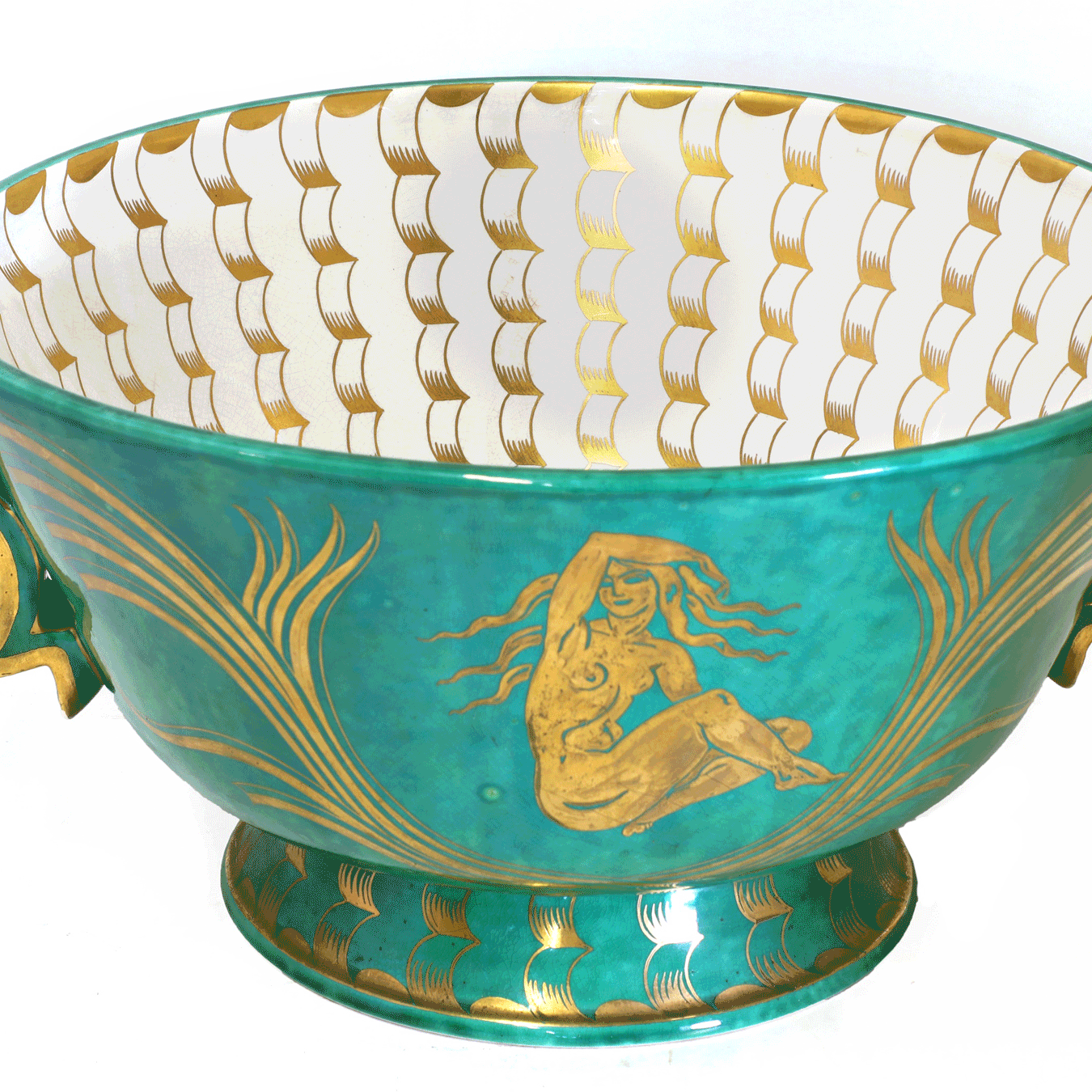

With a vast production, ranging from utilitarian dinnerware to statement art pieces, Wilhelm Kåge is arguably one of the most significant names in the history of 20th century ceramics.
9 August 2022
Kåge's childhood and youth were defined by his love of art, which saw him employed as a sign writer and advertisement designer. Throughout his training, he brushed shoulders with some of the most significant names in Modernism, both in Scandinavia and throughout Europe, with the likes of Carl Kylberg, Gösta Adrian Nilson (GAN) and Henri Matisse having significant impacts on his artistic development.
His modernist design eventually caught the eye of Axel Odelberg, head of the Gustavsberg porcelain factory, who employed Kåge to modernise their product range under the movement known as ‘Vackrare vardagsvara’ which loosely translate to ‘Enchanting everyday’. The movement brought aesthetically pleasing and affordable dinnerware to Swedish households. His initial designs were a tremendous success and saw him appointed artistic director - tasked to develop several successful patterns and designs.

A Gustavberg twin-handled bowl of large size, dated 1928, by Wilhelm Kåge. Estimate £400-600
Kåge’s most significant artistic legacy, however, would be unveiled at the Stockholm Exhibition of 1930 which saw the advent of the ‘Argenta’ range. The pinnacle of Swedish Art Deco, or Swedish Grace as the period is more commonly known, these pieces featured a mottled green copper glaze, often with striking painted silver motifs of imposing sea creatures, or characters drawn from classical iconography. With their simplistic and clean forms, the series became a phenomenal success, with red and blue versions introduced later in production.
The conceptual origin of the Argenta ware, is believed to be synchronous with the 1925 Paris Exposition des Arts Décoratifs et Industriels as the figures depicted are of the typical soft elongated forms of the Swedish Grace movement, immortalised not only in the works of Kåge, but also seen in contemporaries such as Simon Gate and Carl Milles.
We are delighted to be offering one of these early forestudies in our October Design sale - a design that would eventually become one of the most ubiquitous forms in Swedish design history. Dating from 1928, this impressive punch bowl shows Kåge continuing Gustavsberg’s tradition of working with flint ware, infused with the forms and colours and shapes of the new age. This aesthetic would forever change the direction of Swedish studio ceramics and earn him worldwide renown as one of the leading figures of the era.
Our forthcoming auction of Design will take place on Tuesday 25 October 2022.
For further information, or to consign for a future auction, please contact -
design@sworder.co.uk | 01279 817778
Author: Otto Billström
A remarkable collection of 177 lots of rare and historic Bibles feature in our timed auction of Books, Manuscripts and Maps from 17-27 April, offering collectors, scholars and history enthusiasts a unique opportunity to own some of the most significant early English translations of the Holy Scriptures. The collection showcases centuries-old editions that played a pivotal role in shaping religious thought, language and culture.
15 April 2025
Ahead of his upcoming ‘retirement sale’ on 13–14 May, we caught up with the ever-charismatic Paul Atkinson to uncover some of the captivating stories behind the lots on offer.
11 April 2025
With styles and silhouettes endlessly evolving during the Victorian period, the continuous advancements in fashion offered women more choice and freedom regarding their attire. Sworders are delighted to present a collection of Victorian clothing in our upcoming Jewellery, Designer Handbags & Accessories sale, taking place on Wednesday 23 April.
9 April 2025